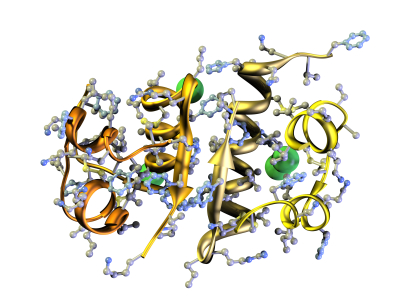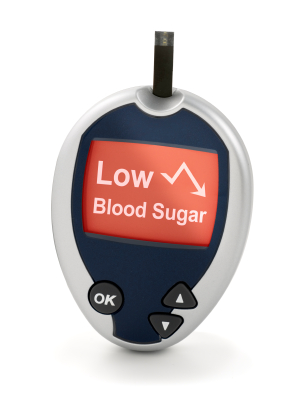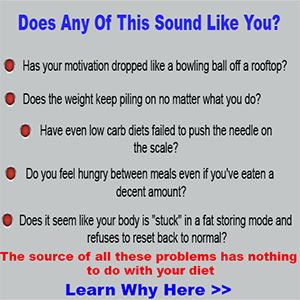Is This The Evil Hormone Everyone Says It Is?
The words insulin and blood sugar are thrown around a lot. I mean so much that most people are extremely confused and are eating or not eating things because what they think they know about insulin and blood sugars.
Here is an insiders guide to insulin so you will know the facts and not fall into hearsay and mass media mis-information that can derail your weight loss efforts.
Insulin is used to build lean muscle and also what many of us know to also store calories as fat. It is actually a protein much like growth hormone and has amino acids chain together to just like other protein molecules.

What makes this different though is the way the amino acid chains are folded which turns it into a signaling mechanism instead of an anabolic protein molecule that most of us are familiar with.
Basics Of Insulin
When you eat food and particularly carbohydrates, but also protein your body produces insulin and releases it so that it can shuttle the sugars in your blood from that meal into the appropriate muscle cells and also fat cells.
It allows the muscles to absorb the sugars into the muscle fibers much like operating a gate. It opens the gate so that your muscles can absorb the sugar molecules if it needs it to repair and replenish the glycogen stored in the muscle.
Insulin also allows amino acids to enter the muscle cells to instigate new muscle building which is why after a workout we want to consume carbohydrates and protein quickly after a workout. This is when your muscle are wanting those nutrients. We need to consume carbs and protein so that it spikes your insulin levels to allow the gates to open at your muscle cells to absorb these nutrients for muscle building and repair.
So Why Does Insulin Also Promote Fat Storage?
When we eat and insulin is released from our pancreas our brain also sends a signal that we have just been fed and it does this by other hormones similar to insulin becoming elevated. Since your body always wants to store calories in case it ever needs them at a later time the nutrients will also try to be absorbed into the fat cells. When you eat high amounts of sugar your body goes into a little bit of a panic and usually sends out to much insulin since all it knows is there is a huge spike of sugar in the blood. This then causes your body to store too much sugar in the fat cells and leads to hypoglycemia or low blood sugars.

This then triggers your brain telling you that you are hungry again and for many this process keeps repeating itself. Unfortunately this leads to overeating and weight gain. So if you ever wondered why you are hungry shortly after eating check to see what you just ate. If it was primarily carbs then your body overcompensated and took too much sugar out of the blood which triggered your hunger response.
So the trick is to know when to spike your insulin and when to control it so that the majority of the sugar in your blood is going into your muscle cells and not your fat cells.
How To Control Insulin Levels
The first rule to controlling insulin is knowing what type of foods you are eating in regards to the glycemic load. The glycemic load is the insulin response your body has when eating a specific food. Lower glycemic load foods will trigger a lower insulin response and a higher glycemic load food will trigger high insulin response.
This means your body has a lot of insulin circulating around trying to pull more sugar out of the blood than what is needed. If the muscles don't need it then guess where it goes? To the fat cells!
The exception is after a workout. You do want a higher glycemic load after a workout because your muscles are going to take all those circulating sugars and use them for muscle building and repair as I explained above.
At other times though you want to eat foods that have a lower glycemic load which pass slowly through the digestive system and trigger a much lower insulin response which minimizes the storage of calories as fat.
Here are some common foods that have a lower glycemic load. This is just a sample list and if you search the internet for "low glycemic load foods" you will find large lists of foods with their estimated glycemic load and serving size.
Barley
Chickpeas
Oat Bran
Rye Breads
Rice Breads
Foods with high fiber content and this can include various cereals, breads, etc
Multigrain breads
Various legumes or beans (usually include high fiber)
So go low glycemic load most of the time to control insulin spikes so that your body uses the sugars it does have in your blood for muscle absorption. Also consuming protein with every meal also helps to control insulin because protein consumption boosts a hormone called glucagon and this is the antagonist to insulin. So if glucagon can be elevated then insulin will be lower as a result.
Just another way to help control insulin spikes and tuning your body to be a fat burning machine rather than a fat storage machine. Don't be afraid of carbs and sugars. They are something are body needs to function properly and to build new lean muscle.
Just learn to control them and know what to eat and when. That is the key to losing weight and keeping it off.
About Jayson Hunter & Jaylab Pro

Jaylab Pro was founded by Registered Dietitian Jayson Hunter. Jayson has been recognized as one of America's foremost weight loss experts by America's Premier Experts™. He has also been featured in USA Today for this accomplishment. Jayson is also a best-selling author having co-authored multiple books in health & fitness and business growth. Jayson and the Jaylab Pro team are proud to create content that helps improve the lives of millions of people around the world. We hope you enjoy it just as much as others have.
 If you order a JayLabPro SmartShip product or any Combo Package, we will automatically ship you a new supply of the product or products you have ordered every month, starting 30 days after your initial order is shipped, and continuing until you cancel. The credit card you are using today will be billed the lowest available price for those product or products when your order is shipped, but shipping will be FREE. You may log into your customer account or call our customer service department toll-free at 1-888-9GETPRO (1-888-943-8776) between the hours of 8am – 9pm EST Mon-Fri to cancel future shipments, customize the timing of your shipments, or change the credit card used for billing.
If you order a JayLabPro SmartShip product or any Combo Package, we will automatically ship you a new supply of the product or products you have ordered every month, starting 30 days after your initial order is shipped, and continuing until you cancel. The credit card you are using today will be billed the lowest available price for those product or products when your order is shipped, but shipping will be FREE. You may log into your customer account or call our customer service department toll-free at 1-888-9GETPRO (1-888-943-8776) between the hours of 8am – 9pm EST Mon-Fri to cancel future shipments, customize the timing of your shipments, or change the credit card used for billing.









